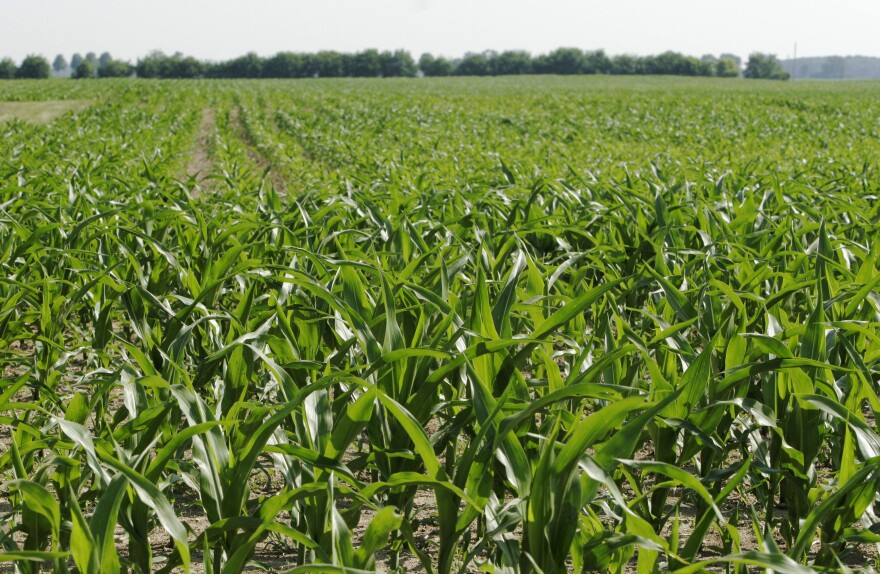Much of the Midwest, including Franklin County, is under a heat advisory this week and one phenomenon that may be contributing to how humid it is outside is corn and the water it sweats off while growing.
While corn sweat, also called evapotranspiration, doesn't cause temperatures to skyrocket, the moisture certainly contributes to hotter days. The common Midwest saying is, "it's not the heat that gets you, but the humidity" could apply to corn sweat as well.
Ohio State University's Extension Office's website says evapotranspiration refers to the natural process by which plants, in this case corn, move water through the plant to its surface, which then allows this water to evaporate into the atmosphere. For corn, this transition of water from plant to atmosphere typically occurs through the stomata in leaves as well as other surfaces of the corn.
The millions of acres of corn grown in states like Ohio, Illinois and Iowa perspire just like any other plant. Ohio is expected to produce about 3.25 million acres this year.
A single acre sweats 3,000 to 4,000 gallons of water every day. If you do the math, that means upwards of 14 billion gallons of water is sweated into the atmosphere by corn every day.
Gerry Puckett with Ohio Corn and Wheat said corn sweat is actually a healthy sign for the plant.
"It does raise humidity and heat index, especially on those hot days, but it never impacts storms," Puckett said. "It doesn't have that kind of power. Maybe in certain areas of the state make it feel a little bit less tolerable outside."
OSU's extension office agrees, and points out research suggests that while the corn contribution to low level humidity is a factor, it may not be the most abundant source. It is moisture brought into the region, typically due to southerly or westerly winds from the Gulf of Mexico.
Puckett said this is an important process for the plant to cool itself down, just like humans.
"When you hear the word corn sweat, you think it's a joke, and it might sound like a joke. But it's a great example of how our plants and people and our weather really are all connected," Puckett said.
Puckett said corn yields are expected to drop this year due to a number of factors, including the impacts of last year's droughts and how rainy it has been this year. He said many farmers didn't see their target "knee high by the 4th of July" this year, which indicates a typical growing season.
Puckett said 90% of the corn you see grown in Ohio is not for human consumption. He said almost 60% is "feed corn" for livestock and about 30% of that goes to ethanol production. The remaining amount usually goes to exports or into corn byproducts.






